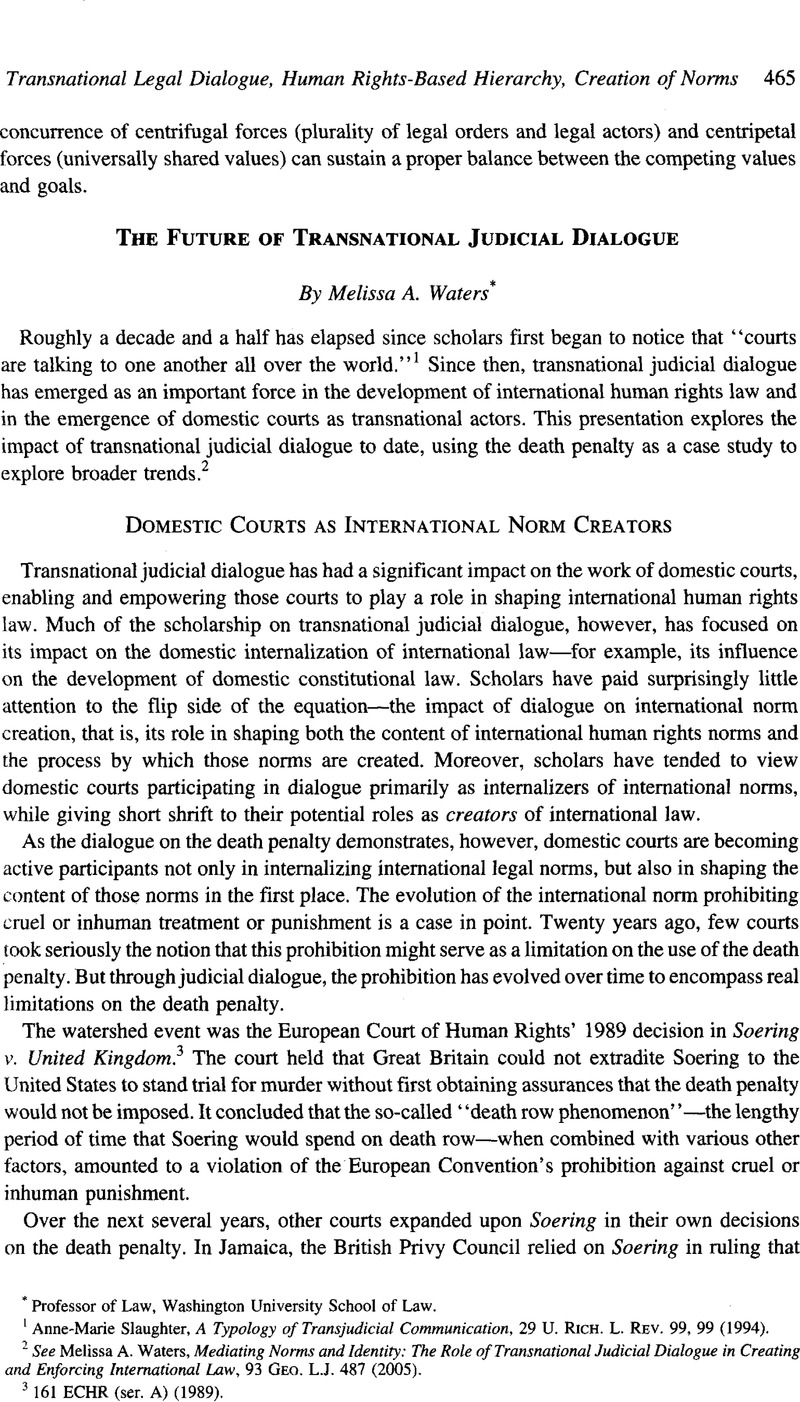Article contents
The Future of Transnational Judicial Dialogue
Published online by Cambridge University Press: 28 February 2017
Abstract

- Type
- Transnational Legal Dialogue, a Human Rights-Based Hierarchy, and the Creation of Norms
- Information
- Copyright
- Copyright © American Society of International Law 2010
References
1 Slaughter, Anne-Marie, A Typology of Transjudicial Communication, 29 U. Rich. L. Rev. 99, 99 (1994)Google Scholar.
2 See Waters, Melissa A., Mediating Norms and Identity: The Role of Transnational Judicial Dialogue in Creating and Enforcing International Law, 93 Geo. L.J. 487 (2005)Google Scholar.
3 161 ECHR (ser. A) (1989).
4 Pratt v. Attorney-General for Jamaica, [1994] 2 A.C. 1 (P.C. 1993).
5 Catholic Comm’n for Justice & Peace in Zimbabwe v. Attorney Gen., [1993] 1 Z.L.R. 239.
6 State v. Makwanyane, 1995 (3) SALR 391 (CC) (S. Afr.).
7 Kindler v. Canada, [1991] 2 S.C.R. 779 (Can.).
8 Id. at 801.
9 United States v. Burns, [2001] 1 S.C.R. 283 (Can.).
10 Id.
11 Id. at 324 (quoting Makwanyane, supra note 6, at 431).
12 Id. at 312.
13 See Waters, Melissa A., Creeping Monism: The Judicial Trend Toward Interpretive Incorporation of Human Rights Treaties, 107 Colum. L. Rev. 628 (2007)Google Scholar.
14 543 U.S. 551 (2005).
15 See cases discussed in Waters, supra note 13, at 683-86 (discussing use of constitutional Charming Betsy canon worldwide).
16 See id.
- 4
- Cited by


